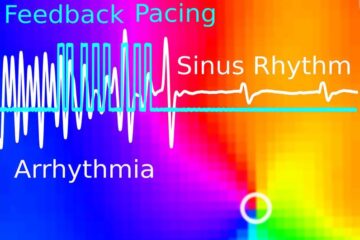A slight twist with serious consequences

Nobody is entirely sure what the huntingtin protein does when it’s operating normally, but the effects of its malfunction are all too clear: increasingly severe neurological deficits, affecting motor activity and memory and ultimately resulting in dementia.
Huntingtin typically contains an internal stretch of repeated glutamine residues, but this number increases—sometimes dramatically—in Huntington’s disease (HD) patients. This is accompanied by a marked structural change, with the protein aggregating into fibrous clumps within the brain known as amyloid deposits. It is unclear, however, what effect these have on neuronal health or the role they play in HD pathology.
In other plaque-forming diseases, such as prion disease and Alzheimer’s, these amyloid aggregates can assume multiple different structures with variable physiological effects. Now, RIKEN Brain Science Institute investigator Motomasa Tanaka and colleagues recently have found that huntingtin amyloids have similar properties1.
Temperature is known to affect protein folding, and initial experiments revealed subtle differences between huntingtin fibrils formed at body temperature versus 4 °C. Both samples were rich in structures known as â-sheets, but the lower temperature amyloids proved more fragile and detergent-sensitive, and exhibited higher affinity for labeling dyes. These distinct conformations could also be ‘amplified’ in cells; when amyloids formed at a particular temperature were introduced into cells expressing huntingtin with disease-specific numbers of repeats, they acted as seeds for the formation of larger aggregates with the same conformation. Surprisingly, the low-temperature aggregates were found to cause significantly higher levels of cell death than those formed at higher temperatures.
Tanaka’s team also found unexpected evidence that huntingtin aggregates isolated from a mouse model of HD assume different conformations depending on the region of the brain in which they formed. For example, amyloids from the striatum resembled low-temperature aggregates, while those isolated from the hippocampus were more similar to aggregates that formed at higher temperatures. These structural characteristics were also reflected in their relative cytotoxicity. Tanaka points out that the striatum is among the brain regions most vulnerable to HD, and suggests that “structural diversity of amyloid may dictate regional specificity of HD.”
These new structural insights help explain why different studies have yielded apparently contradictory findings about the extent of huntingtin fibril toxicity, although further investigation will be needed to determine the basis for this differential folding and the altered pathological impact of this alternate conformation. “Our current priority is to understand how the same polypeptide misfolds into distinct amyloid conformations,” says Tanaka.
Reference
1. Nekooki-Machida, Y., Kurosawa, M., Nukina, N., Ito, K., Oda, T. & Tanaka, M. Distinct conformations of in vitro and in vivo amyloids of huntingtin-exon1 show different cytotoxicity. Proceedings of the National Academy of Sciences USA 106, 9679–9684 (2009).
The corresponding author for this highlight is based at the RIKEN Tanaka Research Unit
Media Contact
More Information:
http://www.rikenresearch.riken.jp/research/757/All latest news from the category: Health and Medicine
This subject area encompasses research and studies in the field of human medicine.
Among the wide-ranging list of topics covered here are anesthesiology, anatomy, surgery, human genetics, hygiene and environmental medicine, internal medicine, neurology, pharmacology, physiology, urology and dental medicine.
Newest articles

Wildfire danger to increase due to climate change
WSL Institute for Snow and Avalanche Research (SLF) researchers expect an elevated wildfire danger in the Alpine Foreland from 2040 onwards due to changing meteorological conditions. The danger currently remains…

Advanced Brain Science Without Coding Expertise
Researchers at Helmholtz Munich and the LMU University Hospital Munich introduce DELiVR, offering a new AI-based approach to the complex task of brain cell mapping. The deep learning tool democratizes…

Gentle defibrillation for the heart
Using light pulses as a model for electrical defibrillation, Göttingen scientists developed a method to assess and modulate the heart function. The research team from the Max Planck Institute for…





















